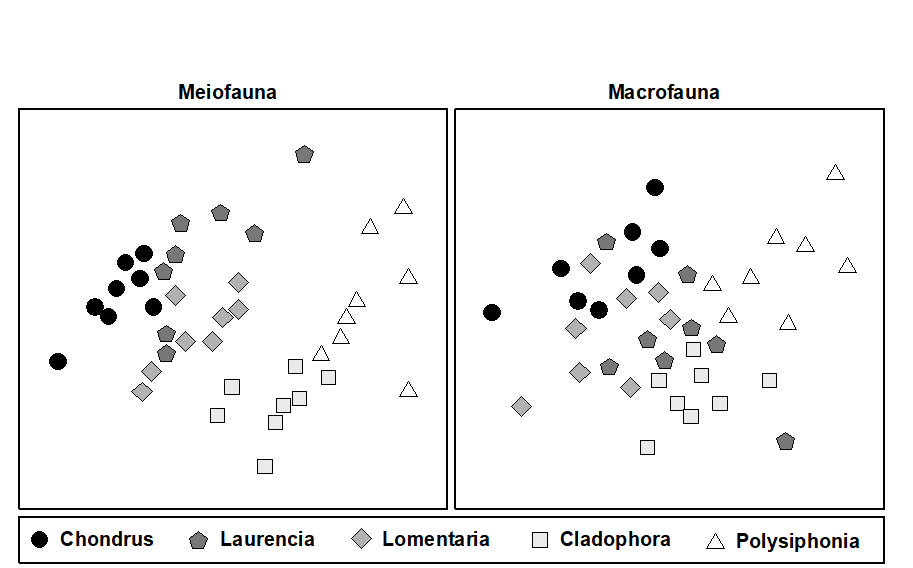13.4 Hard-bottom epifauna and hard-bottom motile fauna
Hard-bottom epifauna
The advantages of using hard-bottom encrusting faunas, reef-corals etc. are:
a) They are immobile and therefore good for local effects studies.
b) A major advantage over sedimentary faunas is that non-destructive (visual/photographic) sampling is possible.
The disadvantages are:
a) Remote sampling is more difficult. Intertidal or shallow subtidal sites can be surveyed (the latter by divers); remote cameras require a greater level of technical sophistication but great strides have been made with this technology in recent decades.
b) Enumeration of colonial organisms is difficult, so that abundance units such as number of colonies or percentage cover must be used – this only becomes a problem when it is necessary to combine data on colonial organisms with that on motile species (see page 5.9). However, biomass measurements are difficult to make.
Example: Indonesian reef corals
The example shown in Fig. 13.6, of the effects of the 1982-3 El Niño on reef coral communities at South Pari Island, was seen in Chapter 10. A clear difference is seen in community composition between 1981 and 1983, with a more steady pattern of change thereafter, though without full reversion to the initial state.
Fig. 13.6. Indonesian reef-corals {I}. MDS for coral species percentage cover data for South Pari Island (10 replicate transects in each year). 1=1981, 3=1983 etc. (stress = 0.25).
Hard-bottom motile fauna
The motile fauna living on rocky substrates and associated with algae, holdfasts, hydroids etc. has rarely been used in pollution impact studies because of its many disadvantages:
a) Remote sampling is difficult.
b) Quantitative extraction from the substrate, and comparative quantification of abundances between different substrate types, are difficult.
c) Responses to perturbation are largely unknown.
d) A suitable habitat (e.g. algae) is not always available. A solution to this problem, and also problem (b),
that has sometimes been tried in practice, is to deploy standardised artificial substrates, e.g. plastic mesh pan-scrubbers, along suspected pollution gradients in the field, allowing these to become colonised.
Example: Metazoan fauna of intertidal seaweed samples from the Isles of Scilly
The entire metazoan fauna (macrofauna + meiofauna) was examined from five species of intertidal macro-algae (Chondrus, Laurencia, Lomentaria, Cladophora, Polysiphonia) each collected at eight sites near low water from rocky shores on the Isles of Scilly, UK ( Gee & Warwick (1994a) , Gee & Warwick (1994b) ). The MDS plots for meiobenthos and macrobenthos were very similar, with the algal species showing very similar relationships to each other in terms of their meiofaunal and macrofaunal community structure (Fig. 13.7). The structure of the weed therefore clearly influenced community structure in both these components of the benthic fauna.
Fig. 13.7. Scilly Isles seaweed fauna {S}. MDS of standardised $\sqrt{} \sqrt{}$-transformed meiofauna and macrofauna species abundance data. The five seaweed species are indicated by different symbol and shading conventions (stress = 0.19, 0.18).


